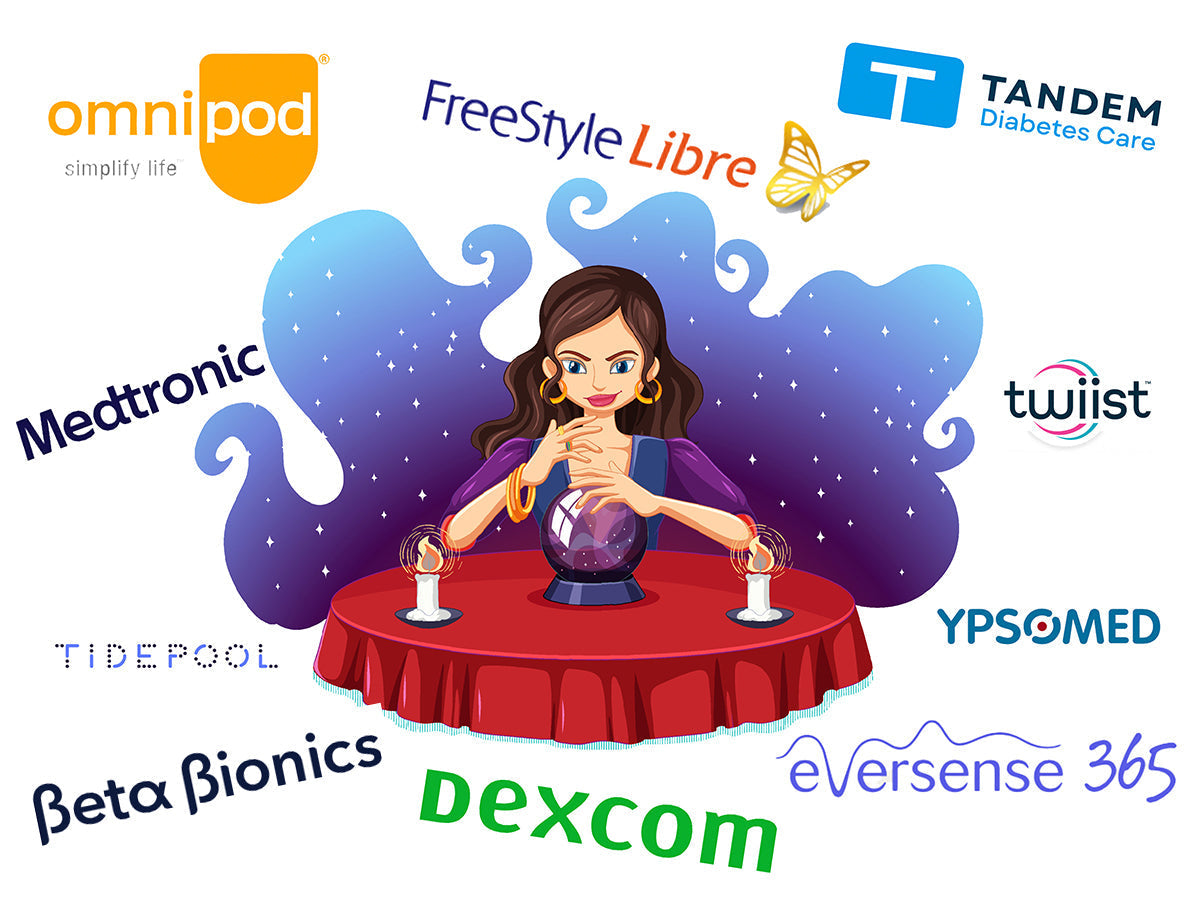| Blogs and publications on this website are independent of any involvement by medtech companies or diabetes related charities. To ensure there is no bias, we do not accept any products, freebies or other material from any medtech provider. All materials are copyright©️Love My Libre Ltd. |
***
🎬 TURNING RED, Disney Pixar
Turning Red is the latest Disney Pixar animated film, released on 11 March on Disney+, and has been heralded in the diabetes community for featuring characters with diabetes. But, in reality it appears to do very little to raise awareness of the condition and to me feels like a missed opportunity.
There’s a brief synopsis of the story at the end of this article.

In the trailer, released in July 2021, a character appeared to be wearing a continuous glucose monitor (CGM) and this led to much interest and excitement in diabetes-related forums.
The snippet suggested to many that diabetes was going to be a feature to a certain extent in the film. However, having now watched the film, I noticed that there is no mention of diabetes only a suggestion by the image of an infusion set i.e. part of an insulin pump, on the arm of 2 minor characters - and you can’t even make out the tubing.
It was disappointing to learn that it is not a CGM as first assumed, because the film is set specifically in 2002, before continuous glucose monitors became available.
Interestingly, Pixar chose not to position the pump on the characters’ abdomen (the position most favoured by pump wearers) as it wouldn’t be significantly noticeable there. This in itself suggests the company are not really looking to represent users and promote awareness of diabetes or ‘diabetes medtech’ as normally used.

Despite this, I wanted to consider if the film is still helpful in terms of diabetes awareness.
And to answer this I’ve looked to see 3 aspects.
> Firstly, whether it represents living with diabetes?
> Secondly, if it informs those who have no knowledge of the condition?
> And finally, does it normalise diabetes in any way?
In England and Wales, current statistics suggest that there are around 220,000 people with type 1 diabetes (aged 19 years and over) and fewer than 10% of T1s have a pump although this does vary widely by postcode area and those under 18 years are much more likely to have a pump under the NHS.
Whilst in the US, approximately 3 million children and adults are estimated to have T1D and of these it is estimated that there are 350,000 pump users, 30,000 of these having type 2 diabetes.
In terms of population, these figures show that wearing a pump is not commonplace and represents a very small audience of around 0.1% of US citizens using a pump.
This corresponds with estimates in the UK that 1 in 1,000 people with diabetes wear an insulin pump, or putting it another way, in theory you would come across 1 pump wearer in every 10,000 people you encountered.
However, in Turning Red we have 2 characters with pumps, which would be unusual although not impossible. But, it is not explained in any way.
Pixar have also chosen to shown the pumps on two young, white, female characters of similar age and the characters only appear in 5 very short scenes in the first half of the film.
In England and Wales over 60% of those with type 1 diabetes are over 40 years old and it seems a shame that Pixar didn't choose an older character to depict a second pump user.

It is also worth noting that ethnicity is also a relevant factor in diabetes diagnosis, treatment and use of medtech. In both the UK and US there are considerable disparities across different populations in terms of gender, age and ethnicity/race.
Showing awareness of diabetes
Unfortunately, the animation makes no reference to diabetes and there are no scenes that involve anything related to dealing with management of the condition. Nor do any of the actions of the characters show the rollercoaster of what it’s like to live with every day.
If you don’t know what you are looking for then it’s quite easy to miss the references that I assume are intended to infer that the 2 characters have diabetes. Is that the point? I know at least one person posted on a diabetes forum that they themselves had watched the film without realising the association. In that way, it is perhaps normalising the condition, or rather keeping it hidden?
I personally would have liked to see something that at least meant the audience could identify that that was what was being shown. Wearing a CGM myself I know how easily it can be to get knocked and also mistaken for something else and perhaps this could have been introduced in a humourous way.
Normalising diabetes

Explaining the inclusion of characters wearing pumps, the technical supervisor of Turning Red, Susan Fong gave this detail in a recent interview.
"It was a remarkably easy thing to incorporate into this film. And I think a lot of that goes back to the fact that we’ve had a kind of grassroots effort, really probably started around the time of Toy Story 4 of trying to get better representation of what the real world looks like into our characters.
It’s not part of the story and I think that’s important, I know a lot of folks get frustrated by the number of questions they’re asked about diabetes. ‘Should you be eating that? What’s that thing on your arm?’ Sometimes it’s just nice to be who you are, and have it not be a part of the story.”
However, if no-one knows or notices that the characters have diabetes or are wearing related equipment, then what is it that it being ‘normalised’?
Sometimes, it is a good thing to be able to see that a person has a certain medical condition and when needed appropriate support can be given. There are many with diabetes who wear medical ID for this reason.
Another consideration, is that as mentioned at the start of this blog, the film is based twenty years ago and medtech has changed enoromously since then, especially with the expanding use of continuous glucose monitors (CGMs). These are not the future and will soon not only be considered ‘diabetic tech’.
CGMs are rolling-out to a wider audience of athletes, sports persons and anyone interested in the effects of glucose on their health.
And pump infusion sets are set to become old medtech too. Many of the Medical Technology companies are investing heavily in patch pumps, without any visible tubing, and CGMs that are implantable.
The future is orientated to keeping a hidden condition just that!
Summary of comments
The film is clearly not aimed at me although I did enjoy some of the fun and humour. It’s a shame that overall the inclusion of diabetes tech is largely irrelevant.
I also watched the making of the film and again there was no reference to the inclusion of ‘diabetic’ characters or their equipment. None of the scenes or sketches shown included this aspect which again was disappointing thinking back to the trailer.
I think Pixar missed more than one opportunity here with this film to add-in some references to diabetes. The only ones noticing the tech are those already in the know and whilst it’s a nice nod if you do know, then otherwise there isn’t really any point to its inclusion.
Synopsis of the story

The story is a coming-of -age tale all about Meilin, a 13-year-old Chinese-Canadian girl, who turns into a cute, giant red panda whenever she feels strong emotions. In essence this is a metaphor for the changes she is feeling as she experiences the start of puberty.
The main premise is the juxtaposition of Meilin's duty to her parents, and in particular her protective, over-bearing mother, and her desire to be her own person.
The film was inspired by the life of the director, Domee She, and her Chinese background which is very evident in the film. It explores adolescence, relationships, feelings and body ordour with subtle references to the onset of the character’s menstruation cycle.
There's lots of cuteness, laughs and reminders for how it feels to be 13 years old. Remember, the excitement of going to a boy band concert?
As well as appealing to children, probably aged 8 years old plus, it may also be the type of film that older people can identify with and indeed reminisce about their teenage years.
Disclaimer:
The author of this blog has type 1 diabetes and uses the FreeStyle Libre 2 which is provided on NHS prescription. We do not have any affiliate relationship with any third party mentioned. All trademarks are the intellectual property of their respective owners.





Leave a comment (all fields required). Please note, we are unable to respond to individual comments posted here.